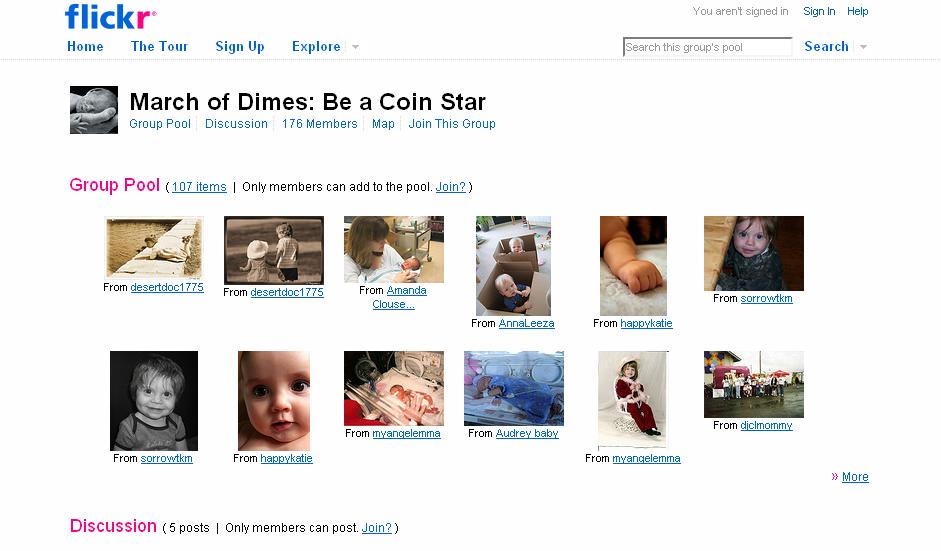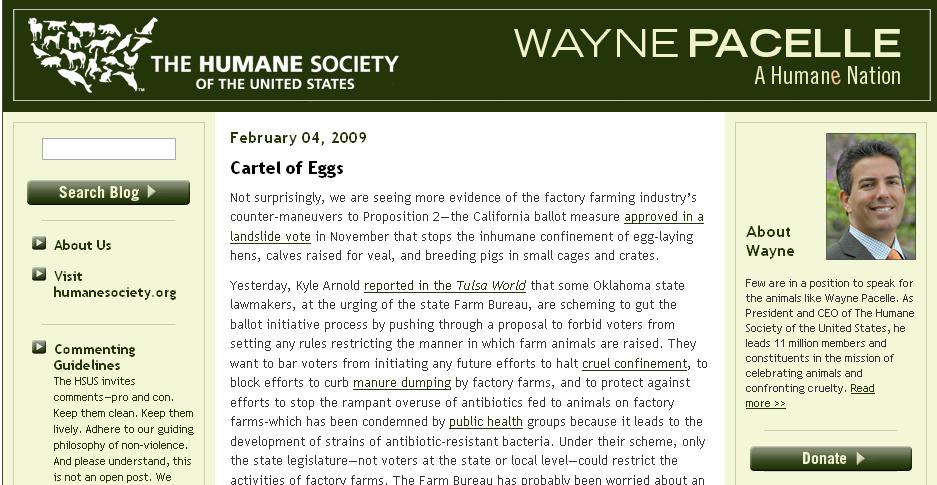Yesterday, Idealist.org and Reddit partnered to announce a brand new project — IdealistNews.com, the new home for social news related to nonprofits. If you don’t spend much time dabbling in the nonprofit arena (you’re so going to Hell for that, BTW), Idealist.org has a huge presence in that community. Which means this new site has the potentially to be outspokenly powerful.
If you’re a nonprofit, you don’t have a lot of money to throw around at marketing or fancy outreach programs. However, you do have something that the big, colder companies don’t. You have a compelling story. And that story is made much more powerful through the use of pictures, video, and blogging.
It’s made more powerful through social media.
Welcome to social media, folks. The tool that can do what cold calling never quite could – make people care. If you’re a nonprofit, here’s how you can take advantage of social media to increase donations, build awareness, and turn your small organization into a brand.
Blogs
An organization with a low budget can’t afford NOT to have a blog. It’s going to be one of your best tools for reaching out to people, connecting with potential donors, and creating visibility. When you’re a nonprofit, your success depends on your ability to tell a good story, to inspire emotion and to basically let people know you exist in the first place. There’s no better tool to do that than a blog.
The easiest way to get started is to get a free blog through WordPress that you can host on your own domain. If you don’t have anyone inhouse to help you set up the hosting, find a local marketing, SEO or IT company and ask for help. They’ll do it for nothing. People want to be associated with good. It makes them feel better about all the sleazy stuff they do on their off time.
Once you’re set up, you’ll have an incredible opportunity to put a voice on what you’re fighting for and to break away from the hundreds of other groups pining for people’s attention and resources.
Use your blog…
- To appeal and reach out to donors
- To establish trust and credibility
- To report on new developments for your cause
- To create media appeal
- To get the community outraged, connected or on your side
- To offer support and to let people share stories
- To provide resources
- To attract volunteers
Your blog is where you show people why you matter and put a face on your cause. It’s your point of difference in a sea of people vying for attention. It should also be Step 1 in your social media campaign. It baffles me that more nonprofits haven’t learned that this year. They’re missing huge opportunities. Don’t be one of them.
Video
Video evokes emotion. The combination of sight and sound can affect people in ways that words often fail. Surfrider uses videos to make their pleas to protect the enjoyment of our world’s oceans, waves and beaches. Could they have called you on the phone, educated you on the deterioration of our waters, and then asked you to volunteer your time or money? Yes. And you would have hung up on them. Because it doesn’t affect you every day. But will you forget that haunting music or that little girl’s eyes?
No, you won’t. And that’s the idea.
If you want to get the word out on the number of homeless children in your area, get it on film. Show people their faces, where they’re living, the conditions, what they’re eating, and use their names. Put a living face on it. You’ll get a much more passionate response than you would with a flyer of a generic sad looking child.
If you’re a nonprofit, you need to learn how to use video to tug on people when it suits you. And you don’t need a lot of money to do that. All it takes is good lighting, a decent camera, and a better microphone. It doesn’t have to be big budget to be effective.
Once you create your video, join YouTube’s Nonprofit Program and get it in front of the people most likely to help pass it on. Upload it to the other social networking sites like Facebook or MySpace. Make it easy for people to take and embed elsewhere. Encourage the spread. People can skim over words, but if you get them watching your video, they won’t be able to look away.

Twitter took away your excuse for why you’re not out connecting with people. The microblogging site gives you a direct channel to share your story with those most likely to donate. It’s a medium that not only encourages you to share your story, but for others to share it as well.
And there are many organizations already taking advantage of the power of Twitter. The American Cancer Society (@americancancer) is on Twitter asking people to share their experiences. The American Red Cross (@redcross) tells folks where they can go to donate blood and then reaches out to personally thank those who have. The Salvation Army (@tsaredkettle) is sharing weird, offbeat tidbits while they shoot for awareness. These are relatively big brands who have decided to use Twitter as part of their marketing efforts. If they can devote time to it, so you can you.
A little while ago, TwiTip offered 8 Twitter Networking Tips: From Online to In-The-Flesh, giving actionable advice for how to use Twitter to connect in a real way. Learn it.
Say you run a local organization that takes in stray cats. Instead of using your $20 marketing budget to print flyers, get yourself on Twitter for free. Head to Twellow to ‘connect with people who matter’ in your area and who are interested in what you’re passionate about. But don’t stop there. Also connect with the folks listed in Activism (and yes, that’s a real category). Even if you’re not fighting for the same thing, you’ll have resources and connections you can share. Expand your network beyond just what you do.
Go to Twitter Search and do a search for your terms like [kitten], [cat],[stray animal]. Find the people who are talking about what you do and reach out to them. Actually start talking to them. Form real relationships. Once the connections are there, lean on them. Plan tweetups. Form outside groups. Just because social media starts online, doesn’t mean you can’t (or shouldn’t) take it offline.
If you don’t have much experience with Twitter and want to see how the big boys use it, The Social Brand Index is a massive list of all the brands on Twitter, broken up by category. Give it a look.
Social Networks:

There are quite literally a million social networks on the Web. Luckily for you, you don’t have to invest your time and energy into all of them. People are already gathering to talk about the issues you’re focused on. All you have to do is find out where your group is congregating and join them.
That could mean:
- Building a LinkedIn profile for yourself and searching the Groups Directory for like-minded people.
- Checking Facebook and Myspace for particular interest groups. The American Heart Association’s Go Red for Women Facebook group has well over 13,000 members.
- Creating a Second Life persona and gaining visibility there.
- Setting up a branded Flickr account to put photos up for media access and to share your work.
- Joining a community like NetSquared where you can learn more about using the social Web and connect with those that already do.
Whatever you do, don’t overextend yourself. Find the sites and communities you think will benefit you and then dip your toe into those. Monitor the results and only make big investments where the payout is good. Your goal isn’t to start a collection of social media accounts. It’s to use social media as a tool to connect with the communities you’re after and to spread your story in a way that brings visibility, donations, volunteers, and increased resources.
Again, it’s about starting in social media and then finding ways to bridge that online experience into the real world.
Widgets
Don’t let the weird name scare you off. Creating a widget is easy and it’s just another way to encourage others to support your cause, both financially and through word of mouth. Widgets go hand in hand with nonprofit organizations because people want to support and spread good causes. When you make it easy for them to do so, everyone wins.
Sites like Network for Good make this process painless. Upload a photo, write some text, and they’ll help you code a badge that you can put on your site or give to others to display on theirs. ChipIn offers another easy way to collect money if that’s your main goal. Widgets don’t have to be scary.
And now that IdealistNews is up, you can help create word of mouth for all sorts of good causes with their own nonprofit headline widget. The power of widgets is that you take out the extra step of forcing people to come to you. They get to take the best portions of your site and put them on your own. It’s easier for them and it’s added exposure for you.
If you’re a nonprofit, tools like widgets and blogs and Twitter are your new marketing devices. They’re (virtually) free and far more powerful than cold calling and in-your-face marketing ever were, so give them a try. Social media gives people the power to tell your story for you. You create a story worth telling and then give them the tools to spread it for you.
If you’re looking for more information about SEO and nonprofits, definitely check out Aaron Wall’s Non-profit’s Guide to SEM. It’s an incredible resource. Also, we’ll be creating our own Small Business Guide that will touch on several of these techniques, as well. Keep your eyes open for that.


